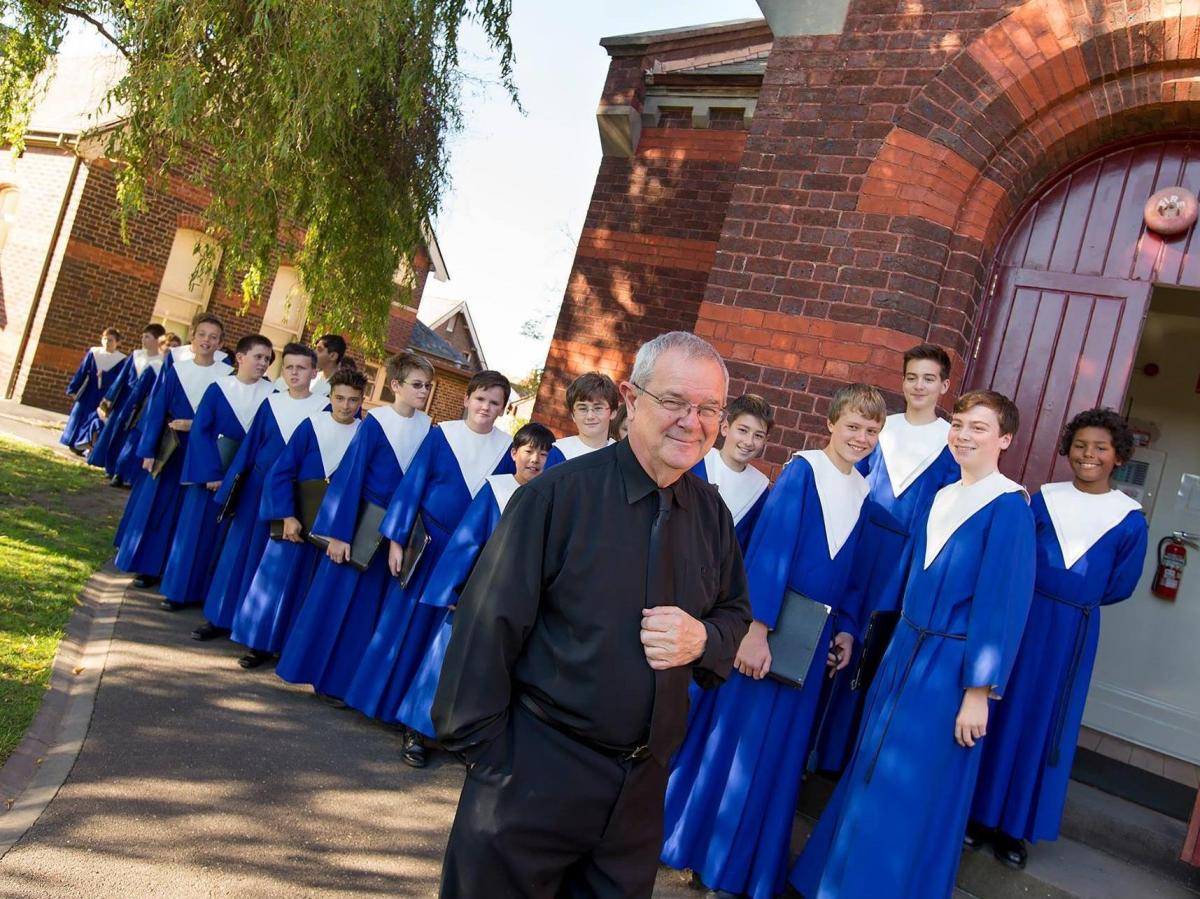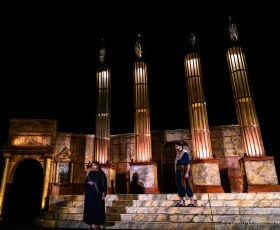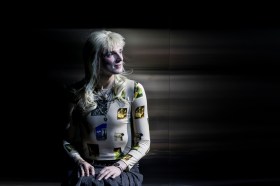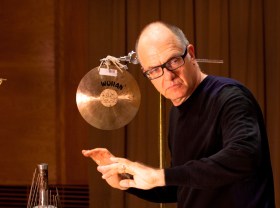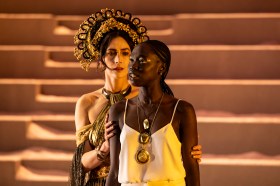The Australian Boys Choir with Artistic Director Noel Ancell. Photograph via Australian Boys Choir.
A sage colleague once commented that you can always measure the health of a country’s culture by how well its children sing. Based on this performance by the Australian Boys Choir in St Paul’s Cathedral, Melbourne on Sunday afternoon we’re doing pretty well.
For an ensemble of boy trebles and altos, with tenors and bases in their early twenties (but for two senior exceptions) an ambitious and demanding program was selected: four dissimilar settings of the Roman Catholic ordinary. The Mass of course is intended for liturgical performance, its light and shade depending on the context of the liturgy it accompanies. Most importantly, in liturgical performance there are pauses for musicians to recover and come back with restored vigour. In concert performance with one ‘movement’ following another there are no such periods for respite and it is usually a challenge to sustain the Gloria and Credo, the two longest texts, with their sections of reflection and high elation.
The concert commenced with two 16th century English settings for four voices by Thomas Tallis and his Elizabethan associate William Byrd. The Tallis, sung by falsettists, tenors and basses (comprising The Vocal Consort) negotiated the opening Gloria well with mellifluous blend, restraint and evident sensitivity. This music is intricate and difficult and if there were errors such as at the end of the Credo, they were easily forgiven. As the work progressed, tuning suffered as fatigue set in. Perhaps a more successful performance might have had instrumental breaks. For the Byrd the boys joined the choir dressed in their smart blue and white robes. The trebles had a fine tone and were attentive to this tricky music. The boy altos seemed underpowered and perhaps would have benefited from being joined by the falsettists. As a general comment there could have been more delineation of expressiveness between sections within movements and the pace could have been adjusted accordingly. The Agnus Dei contains many suspensions setting the words Dona nobis pacem that could have been better conveyed. With four settings of the same text it was these three words Dona nobis pacem that took my attention. Byrd’s plaintive and reserved setting may have suited the clandestine circumstances of the performance of his work during the bitter circumstances of the Reformation in England.
Britten’s music has a playfulness, bluntness and irreverent misbehaviour that children always relish even if adults sometimes don’t. The Kyrie met with radical tuning problems owing to both the excitement of the ensemble at performing this work and the ensemble’s placement well forward of the organ. The Sanctus sounding as clanging handbells was a sheer delight. Throughout its Agnus Dei we heard from the organ accompaniment (played by Michael Fulcher) the sound of taxi horns tooting outside Westminster Cathedral in London. Then this Modernist fun develops a serious side when at the end its extraordinary staccato layered setting of the Dona nobis pacem the final pianissimo utterance seems to glare straight into eyes of post World War II anxiety.
I was further impressed by the final work, the unaccompanied setting in G minor for double choir by Ralph Vaughan Williams. The choir well negotiated its most challenging passages and, apart from a few passages of fatigue, the ensemble’s tuning remained true to the end. The unidentified quartet of soloists from within the choir did a sterling job. Its tender pastoral Dorian-modal setting of Dona nobis pacem looking back with nostalgia to another gentler age was beautifully conveyed.
Noel Ancell has been the National Boys Choir’s director since 1983. His direction is clear, discreet and musical; I only wished that his ensemble looked at him more often.
Rating: 3.5 stars out of 5
The Australian Boys Choir
Noel Ancell, director
Michael Fulcher, organ
Presented by the Australian Boys Choir
St Paul’s Cathedral, Melbourne
11 September 2016
